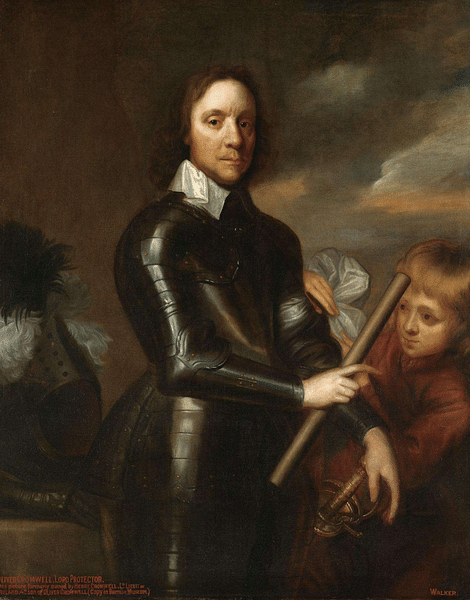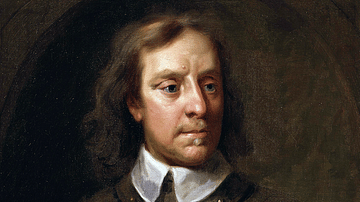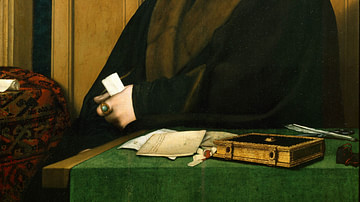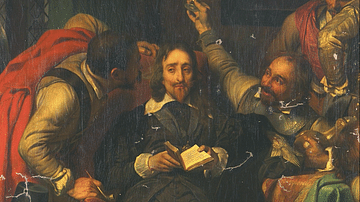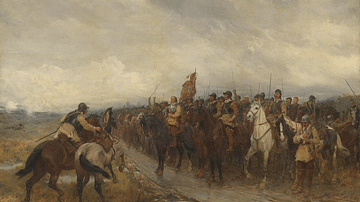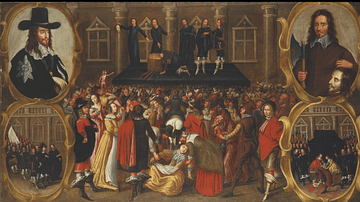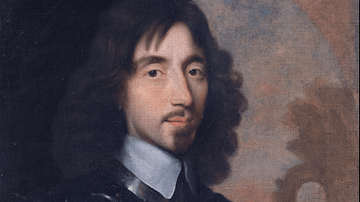The Battle of Preston between 17 and 20 August 1648 occurred during the English Civil Wars (1642-1651) and saw Oliver Cromwell lead Parliament's New Model Army to victory against an Anglo-Scottish army which supported King Charles I of England (r. 1625-1649). The Royalists were routed over several days in a running battle that ended the brief action known as the Second English Civil War (Feb-Aug 1648).
The Civil War
Victory for Parliament at the Battle of Stow-on-the-Wold in March 1646 concluded what has since become known as the First English Civil War (1642-1646). The Royalists had not given up their cause yet, though. The king had fled to the north of England but was handed back to the Parliamentarians by a Scottish army in January 1647 following disagreements over future religious reforms should the king ever be restored to power. In November, Charles escaped his English captors and established himself on the Isle of Wight.
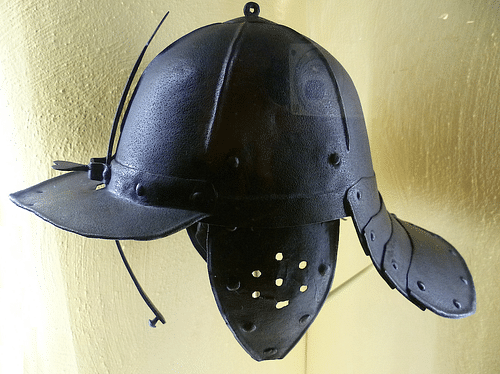
The king and his supporters now hoped to create a series of uprisings in Wales and England, which would so occupy Parliament's New Model Army that a Scottish army could invade and bring Charles a victory on the battlefield and then control of London, finally ending the Civil War in his favour. The Scots had become Charles' allies again after he signed the Engagement at the end of 1647, an agreement with the influential Scottish Covenanters. The agreement promised that the king would not interfere in the Presbyterian Church in Scotland, something that Oliver Cromwell and the Parliamentarians might well do, or if not, then they would certainly block the development of this Church in England. The planned uprisings would, it was hoped, not only spring from the desire for religious reform and toleration of holidays like Christmas (which Parliament had effectively banned the celebration of) but also widespread concern over high taxes, felt particularly keenly after there had been a run of poor harvests. This short but consequential phase in the long-running conflict between King and Parliament has since become known as the Second English Civil War.
The Scottish Invasion
In April 1648, English Royalists took Berwick and Carlisle, but as it turned out, the uprisings in southern Wales, Kent, and Colchester were easily crushed by Parliamentarian armies. At least the Royalists managed to entangle a Parliamentary army of 8,000 men at the siege of Pembroke from May to July 1648. Meanwhile, the Scottish invasion was slow to get moving because of political wrangling and then poor weather. At last, on 8 July, the Duke of Hamilton led a combined Scottish and English army into England. This force numbered around 10,000 men, and near Carlisle, it linked up with Sir Marmaduke Langdale, who led a force of 600 cavalry and 3,000 infantry. As the two armies marched on, they became increasingly distant from each other over the next few days. Hamilton's force eventually camped at Kendal and Langdale's at Settle, some 50 kilometres (30 mi) away. A third Royalist force, this one composed of Irish veterans, was led by Major General George Monro, but, stationed at Kirby Lonsdale which was another 50-odd kilometres from Preston, they were obliged to await supplies of ammunition from Scotland. Part of Monro's troops were sent to garrison the newly acquired Carlisle Castle and aid in the siege at Lancaster Castle.
Ribbleton Moor
Parliament's main army, which moved across the Pennines from Wales to northern England, was led by Oliver Cromwell. It was smaller than the Royalist army, with only around 8,500 men, but they were well-trained and experienced, much more so than the majority of the enemy, particularly the musketeers. Cromwell linked up with a Parliamentary army of six regiments led by Colonel John Lambert, which had been patiently awaiting the great general's arrival. Cromwell's cavalry was the first to link up, and the infantry soon followed so that both Parliamentary armies billeted at Wetherby in West Yorkshire on 12 August. The combined Parliamentary army then marched westwards into Lancashire.
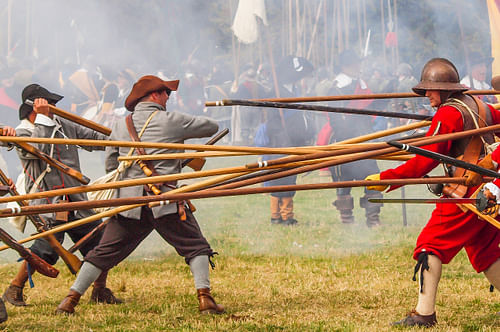
The Scottish and Parliamentary armies faced each other across Ribbleton Moor near Preston on the morning of 17 August 1648. The terrain of what turned out to be two main engagements in the coming battle was not favourable to cavalry, and so the Battle of Preston was largely decided by a clash of infantry followed by the Parliamentarian cavalry pursuing the retreating and disordered Royalists. Although the value of artillery in the English Civil Wars was largely recognised by most commanders, the Scottish army had no artillery at Preston (despite one contemporary but unreliable and much-quoted source stating they did), and Cromwell, too, decided to leave his artillery train well to the rear to increase the rapidity with which he could pursue the enemy in the field.
A Running Battle
The actual details of the battle and who fought where and at what time has been confused by the conflicting reports commanders and participants gave after the events, in some cases, many years later. The first main action was when a body of the Sottish infantry led by Hamilton was almost surrounded as the Duke's army headed south and crossed the River Ribble. They managed to cross, but in so doing, they left their colleagues under the command of Langdale isolated. There was some confusion as to whether Langdale's Royalists north of the river were engaging in a mere skirmish or the full Parliamentary army or, as was actually the case, a powerful vanguard some miles ahead of the main force. Only when most of the Scottish infantry had crossed the river did it become clear to the Duke of Hamilton that the main battle was indeed going to be north of it. There is some debate as to whether the Duke had the correct intelligence of these developments and rejected the information as being untrue or that he was given the wrong information.
After a few hours of preliminary skirmishes, Langdale's and Cromwell's armies clashed. Initially, the Royalist pikemen and Scots cavalry of mounted lancers repelled Cromwell's cavalry charge. When the main body of the Parliamentary infantry moved in from two sides, the Royalists buckled and began to retreat. The inexperience of Langdale's musketeers had been immediately evident when they wasted their first shots and fired over the heads of the Parliamentary infantry. The Scottish musketeers, nevertheless, benefitted from the terrain, which included many hedges, and so they were only driven back with some difficulty over several hours as the battle fragmented into separate areas of violence.
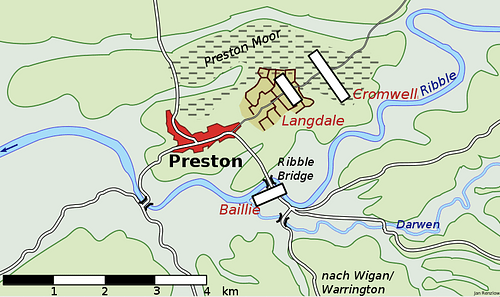
Then, as night fell, the Scottish cavalry, unwisely left some distance from its infantry colleagues, stumbled upon Cromwell's cavalry, thinking they were their own side. The Parliamentarian cavalry and infantry eventually pushed the Royalists back towards Preston, mopping up isolated units. Parliamentary musketeers made one of the few routes of escape, one of two bridges crossing the river, a lethal risk until it was captured by a Parliamentary infantry force. Cromwell had captured the Royalist ammunition train at or just before nightfall of the first day, and this sealed the fate of the isolated Royalist infantry trapped north of the river. The Royalists, now joined by Hamilton who had swum across the river, decided to follow the river and fight a running retreat as best they could, hoping to cross further east and then move south towards Wigan. A series of skirmishes followed, and a great number of Royalist casualties were sustained at Winwick. The fighting continued in this way for the next 48 hours until the last major Royalist infantry force, spent of both energy and bullets, surrendered at Warrington on 20 August.
The reckoning after the battle showed that over 1,000 of the Royalists had been killed over the course of the messy and protracted battle. Some 4,000 men were taken prisoner. The Duke of Hamilton managed to escape with what remained of his cavalry, although the Duke was captured at Uttoxeter in Staffordshire on 25 August. Sir Marmaduke Langdale was captured near Nottingham.
Aftermath
After Preston, Cromwell recaptured Berwick and Carlisle, and he took Pontefract, effectively bringing this Second Civil War to a close. In his report on the battle at Preston to Parliament, Cromwell seems to have doubled the figures of the slain and captured. It was certainly a heavy defeat for the Royalists, but the war had several more twists to take yet.
The protracted events of the Civil War took a new twist when the politicians and military leaders completely disagreed on what to do with the king. In November 1648, Parliament voted to restore Charles and constrain his powers through laws. The New Model Army's leadership, however, had already begun to label King Charles a 'Man of Blood'. This was a phrase from the Bible's Book of Numbers, which was used to identify an individual who would suffer God's vengeance for killing his people. The name seemed even more apt after the debacle of Preston and the Second Civil War in general. The events of 1648 turned yet more people against their warmongering monarch. However, a negotiated settlement to the war was now out of the question. The king must surrender and be brought to trial on charges of treason against his own people. Many hardliners were already calling for the king to be executed.
The king was brought to London from the Isle of Wight, put on trial in January 1649, and, found guilty of treason, he was executed on 30 January. The institutions of the monarchy and the House of Lords were abolished, and England became a republic. Crucially, the monarchy was not abolished in Scotland, where the late King Charles' eldest son became Charles II of Scotland. The final act of the wars was one final invasion attempt by a Scottish army in a series of battles and sieges which became known as the Third English Civil War (1650-1651). The Scots were defeated at the Battle of Dunbar in 1650 (September) and again at the Battle of Worcester in September 1651. Charles II fled to France, and in England, Oliver Cromwell eventually became Lord Protector, head of the Republic.
